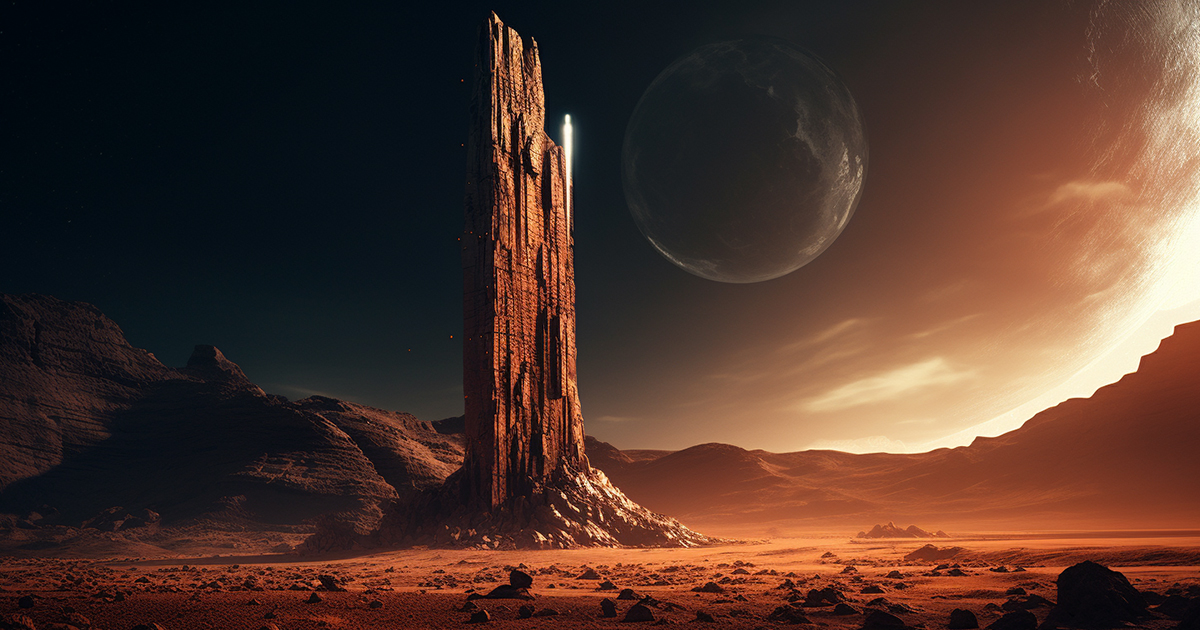Within the vast expanse of our universe, countless mysteries lie undiscovered, and now and then, we chance upon phenomena that challenge our perceptions of history and the celestial sphere. A significant discovery unfolded in 1998 when the Mars Global Surveyor captured images of a mysterious monolith on Phobos, one of Mars’ moons.
The enigmatic Phobos monolith has perplexed scientists and scholars, prompting inquiries into its origins and significance. While not necessarily tied to extraterrestrial entities, this enigma prompts contemplation about Earth’s ancient monoliths and their potential links to cosmic forces.
In 1998, astronaut Buzz Aldrin, the second man to walk on the Moon, drew attention to the Phobos monolith, suggesting it could be a man-made creation. This assertion sparked interest and spurred investigations aimed at unraveling its true nature.
Could it be, as some scholars mull over, that the Phobos monolith is not a solitary oddity? Might analogous structures exist on other celestial entities, perhaps even here on Earth?

Ancient obelisks, such as those in Egypt and Ethiopia, have captivated historians for ages. These towering structures, often carved from crystalline granite housing quartz crystals, possess distinct properties.
Quartz, renowned for its capacity to emit and receive electromagnetic signals, essentially acts as an antenna. In antiquity, it is conceivable that these obelisks played a pivotal role in a global energy distribution network, akin to contemporary wireless transmissions.
Envision a web of strategically positioned obelisks worldwide, emitting energy into the atmosphere. Remote areas could tap into this energy reserve, akin to modern devices linking with satellites.
This compelling hypothesis posits that extraterrestrial influences may have erected this system millennia ago, not only on Earth but conceivably on Mars and other cosmic entities.
The narrative transcends mere stones. Researchers propose that these monoliths formed a harmonious energy grid, interconnecting ancient societies and tapping into cosmic energies in harmony with Earth’s own forces. It entailed a passive but perpetual influx of celestial energy into our realm, heightening the awareness of those near these monolithic marvels.
The placement of these stones was anything but haphazard. They were strategically sited above subterranean water flows, amplifying their energy-generating capabilities. Ancients would gather around these monoliths, touching the stones to absorb the emitted energy—potentially instigating profound shifts in human consciousness.
Moreover, the geometric arrangements of these structures may have formed patterns that heightened human consciousness, serving as conduits to divine realms and cosmic forces. Whether the stone spheres in Bosnia or the megalithic monuments in Avebury, these monoliths were believed to encapsulate the spirits of our forebears and the divine.
Fascinatingly, these interconnected monoliths could have acted as a guide, a connection between Earth and the cosmos. The lingering question pertains to whether these ancient monoliths harbor an advanced cosmic power that eludes our complete comprehension.
Watch the Video:
As we persist in deciphering the enigmas of these ancient monoliths, we may unearth profound connections between our world and the cosmos. The Phobos monolith represents just a fragment of this cosmic enigma, and as we delve deeper into the enigmas of our universe, who can predict the astounding revelations awaiting us?
